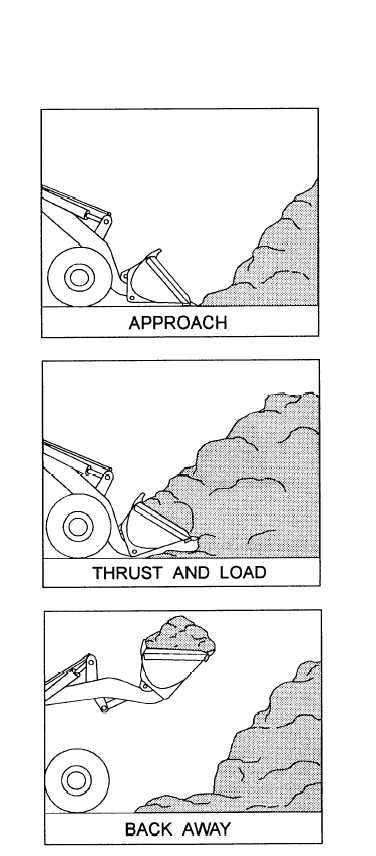Figure 9-19.-Step-loading method.
Loader Operation
A front-end loader can dig excavations, such as
building foundations and other belowground areas, if
the material to be excavated is not too hard.
Belowground operations require construction of a ramp
into the excavation to bring the material out (fig. 9-17).
The slope of the ramp depends on the type of loader
operated; for example, a crawler-mounted loader may
dig a more abrupt approach to the excavation.
When loading from a bank or stockpile, use the “V”
method shown in figure 9-18 or the step-loading method
shown in figure 9-19. Position the dump truck at about
a 30-degree to a 45-degree angle from the stockpile.
Additionally, when possible, load the dump truck
downwind to prevent dirt and dust from blowing back
into your face. Keep the truck close to the work area to
minimize loader travel, and keep the work area clean
and level.
The bucket is loaded by moving the loader forward
with the bucket at the desired digging level and with the
engine at full-governed speed. As the bucket penetrates
the material, raise the bucket slightly. When the material
fills to the top of the spill board, roll the bucket all the
way back (fig. 9-20). The rollback position is main-
tained to prevent spillage while backing away.
When transporting material, raise the lift arm to give
the bucket the same ground clearance as provided by the
loader axle. Keep the travel speed reasonable for safe
operation. Upon reaching the truck, raise the bucket high
enough to clear the truck body. Reduce forward speed
and dump the load in the center of the dump bed, as
Figure 9-20.—Bucket-loading technique.
9-9



